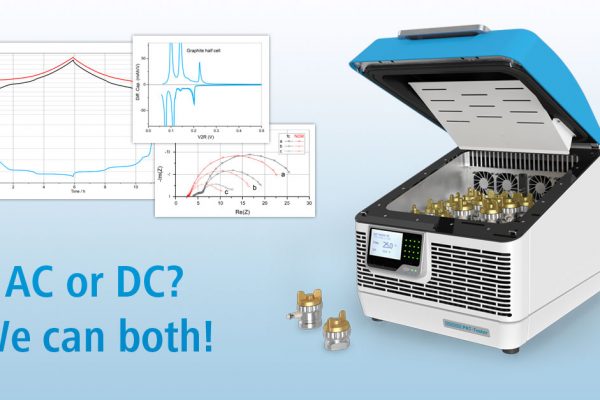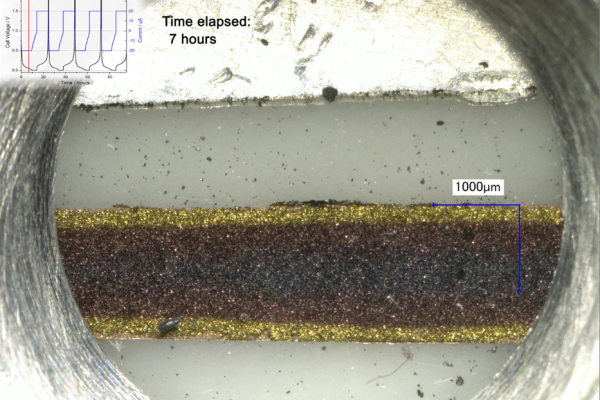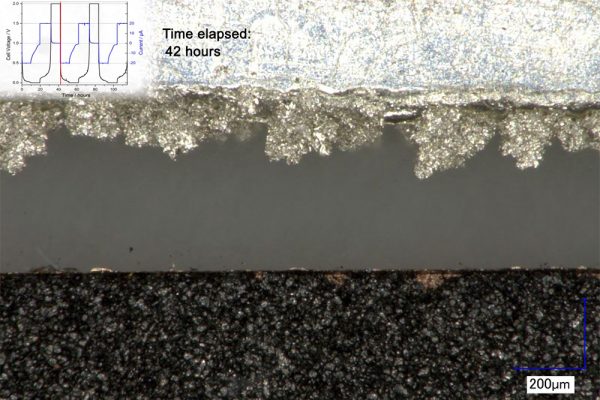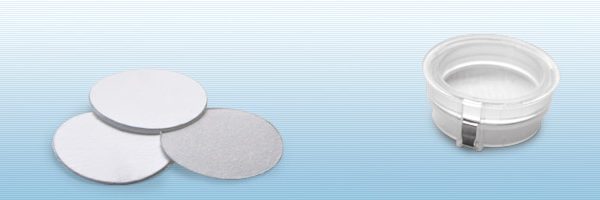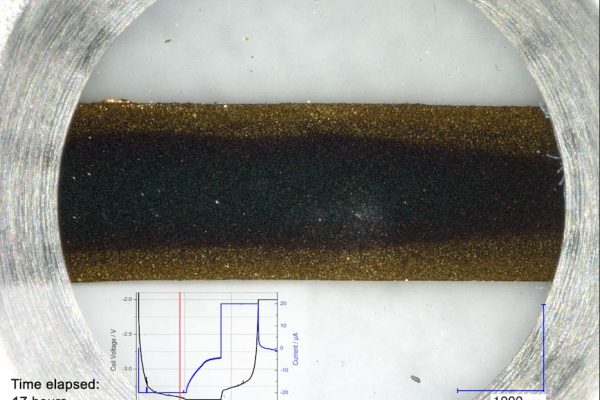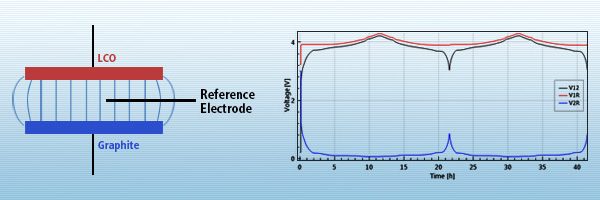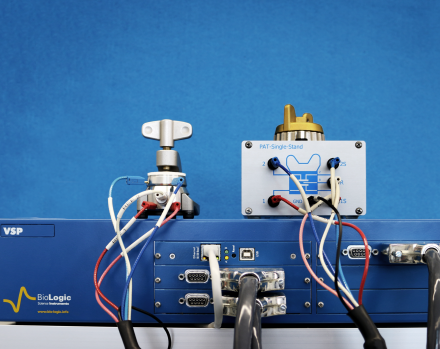Very often, Li-ion test cells are characterized in two separate experiments: first, constant current charge/discharge cycles are applied in order to learn about the direct current (dc) behavior of the... read more →
The anode material in almost all of today’s secondary lithium-ion batteries is graphite. In order to boost the energy density, we would love to replace the graphite by lithium... read more →
In a previous application note named “1001 reasons for using a reference electrode” we tried to convince you of the advantages of three-electrode cells with reference electrode over so-called half... read more →
The FS-5P is a double-layered separator comprised of a 180 µm thick nonvowen PP cloth (Freudenberg FS 2226 E) and a 38 µm thick microporous UHMW-PE membrane (Lydall Solupor 5P09B).... read more →
Former test setup In a previous report, we have used the ECC-Opto-Std test cell to visualize the electrochemical lithiation of a free-standing graphite electrode sandwiched with a lithium metal counter... read more →
There are many good reasons for using a reference electrode. In this note we report a few of them using the example of a lithium-ion battery comprising a lithium cobalt... read more →
Because of the outstanding reliability of the built-in lithium metal reference electrode, the PAT-Cell is the ideal test cell for long-term 3-electrode experiments on Li-ion battery systems. The BioLogic VSP potentiostat,... read more →



